Krishna
Krishna, Sanskrit Kṛṣṇa, one of the most widely revered and most popular of all Indian divinities, worshipped as the eighth incarnation of the Hindu god Vishnu and also as a supreme god in his own right. Krishna became the focus of numerous bhakti cults, which have over the centuries produced a wealth of religious poetry, music, and painting. The basic sources of Krishna’s mythology are the epic Mahabharata and its 5th-century-CE appendix, the Harivamsha, and the Puranas, particularly Books X and XI of the Bhagavata-purana. They relate how Krishna was born into the Yadava clan, the son of Vasudeva and Devaki, who was the sister of Kamsa, the wicked king of Mathura (in modern Uttar Pradesh). Kamsa, hearing a prophecy that he would be destroyed by Devaki’s child, tried to slay her children, but Krishna was smuggled across the Yamuna River to Gokula (or Vraja, modern Gokul), where he was raised by the leader of the cowherds, Nanda, and his wife Yashoda.
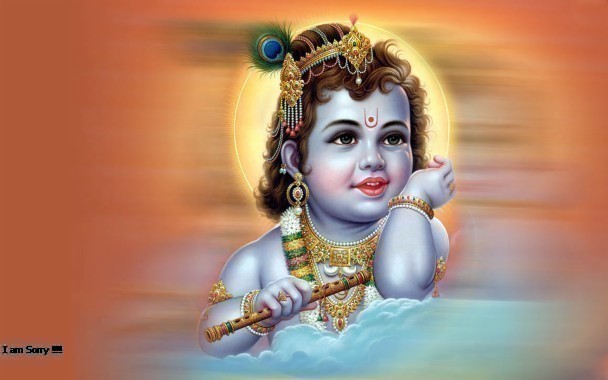
The child Krishna was adored for his mischievous pranks; he also performed many miracles and slew demons. As a youth, the cowherd Krishna became renowned as a lover, the sound of his flute prompting the gopis (wives and daughters of the cowherds) to leave their homes to dance ecstatically with him in the moonlight. His favourite among them was the beautiful Radha. At length, Krishna and his brother Balarama returned to Mathura to slay the wicked Kamsa. Afterward, finding the kingdom unsafe, Krishna led the Yadavas to the western coast of Kathiawar and established his court at Dvaraka (modern Dwarka, Gujarat). He married the princess Rukmini and took other wives as well.
Krishna refused to bear arms in the great war between the Kauravas (sons of Dhritarashtra, the descendant of Kuru) and the Pandavas (sons of Pandu), but he offered a choice of his personal attendance to one side and the loan of his army to the other. The Pandavas chose the former, and Krishna thus served as charioteer for Arjuna, one of the Pandava brothers. On his return to Dvaraka, a brawl broke out one day among the Yadava chiefs in which Krishna’s brother and son were slain. As the god sat in the forest lamenting, a huntsman, mistaking him for a deer, shot him in his one vulnerable spot, the heel, killing him.
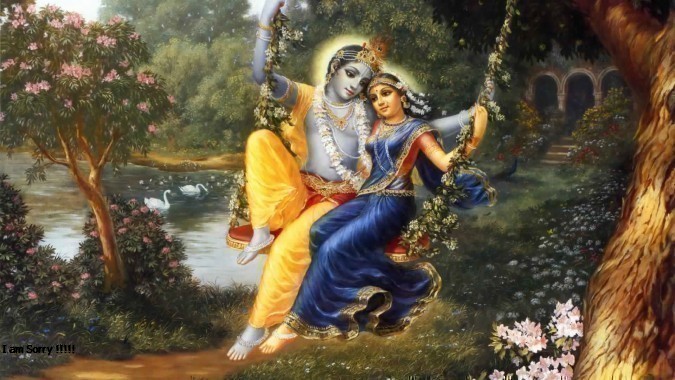
Krishna’s personality is clearly a composite one, though the different elements are not easily separated. Vasudeva-Krishna was deified by the 5th century BCE. The cowherd Krishna was probably the god of a pastoral community. The Krishna who emerged from the blending of these figures was ultimately identified with the supreme god Vishnu-Narayana and, hence, considered his avatar. His worship preserved distinctive traits, chief among them an exploration of the analogies between divine love and human love. Thus, Krishna’s youthful dalliances with the gopis are interpreted as symbolic of the loving interplay between God and the human soul.
The rich variety of legends associated with Krishna’s life led to an abundance of representation in painting and sculpture. The child Krishna (Balakrishna) is depicted crawling on his hands and knees or dancing with joy, a ball of butter held in his hands. The divine lover—the most common representation—is shown playing the flute, surrounded by adoring gopis. In 17th- and 18th-century Rajasthani and Pahari painting, Krishna is characteristically depicted with blue-black skin, wearing a yellow dhoti (loincloth) and a crown of peacock feathers.
The legends of Krishna's childhood and youth describe him as a cow herder, a mischievous boy whose pranks earn him the nickname Makhan Chor (butter thief), and a protector who steals the hearts of the people in both Gokul and Vrindavana. The texts state, for example, that Krishna lifts the Govardhana hill to protect the inhabitants of Vrindavana from devastating rains and floods. Other legends describe him as an enchanter and playful lover of the gopis (milkmaids) of Vrindavana, especially Radha. These metaphor-filled love stories are known as the Rasa lila and were romanticized in the poetry of Jayadeva, author of the Gita Govinda. They are also central to the development of the Krishna bhakti traditions worshiping Radha Krishna.
Krishna's childhood illustrates the Hindu concept of Lila, playing for fun and enjoyment and not for sport or gain. His interaction with the gopis at the rasa dance or Rasa-lila is an example. Krishna plays his flute and the gopis come immediately, from whatever they were doing, to the banks of the Yamuna River and join him in singing and dancing. Even those who could not physically be there join him through meditation. He is the spiritual essence and the love-eternal in existence, the gopis metaphorically represent the prakṛti matter and the impermanent body.This Lila is a constant theme in the legends of Krishna's childhood and youth. Even when he is battling with a serpent to protect others, he is described in Hindu texts as if he were playing a game. This quality of playfulness in Krishna is celebrated during festivals as Rasa-Lila and Janmashtami, where Hindus in some regions such as Maharashtra playfully mimic his legends, such as by making human gymnastic pyramids to break open handis (clay pots) hung high in the air to "steal" butter or buttermilk, spilling it all over the group.

Krishna legends then describe his return to Mathura. He overthrows and kills the tyrant king, his uncle Kamsa/Kansa after quelling several assassination attempts by Kamsa. He reinstates Kamsa's father, Ugrasena as the king of the Yadavas and becomes a leading prince at the court. In one version of the Krishna story, as narrated by Shanta Rao, Krishna after Kamsa's death leads the Yadavas to the newly built city of Dwaraka. Thereafter Pandavas rise. Krishna befriends Arjuna and the other Pandava princes of the Kuru kingdom. Krishna plays a key role in the Mahabharata. The Bhagavata Purana describes eight wives of Krishna that appear in sequence as (Rukmini, Satyabhama, Jambavati, Kalindi, Mitravinda, Nagnajiti (also called Satya), Bhadra and Lakshmana (also called Madra). According to Dennis Hudson, this is a metaphor where each of the eight wives signifies a different aspect of him. According to George Williams, Vaishnava texts mention all Gopis as wives of Krishna, but this is spiritual symbolism of devotional relationship and Krishna's complete loving devotion to each and everyone devoted to him. In Krishna-related Hindu traditions, he is most commonly seen with Radha. All of his wives and his lover Radha are considered in the Hindu tradition to be the avatars of the goddess Lakshmi, the consort of Vishnu. Gopis are considered as Lakshmi's or Radha's manifestations.
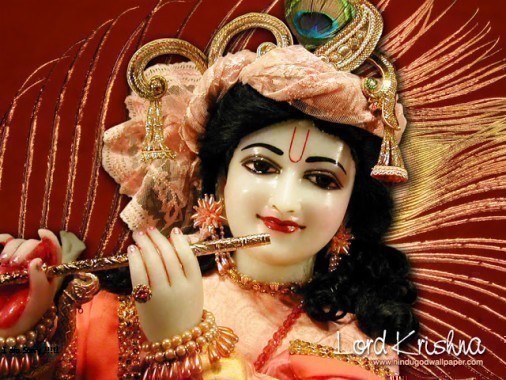
According to the epic poem Mahabharata, Krishna becomes Arjuna's charioteer for the Kurukshetra War, but on the condition that he personally will not raise any weapon. Upon arrival at the battlefield and seeing that the enemies are his family, his grandfather, and his cousins and loved ones, Arjuna is moved and says his heart will not allow him to fight and kill others. He would rather renounce the kingdom and put down his Gandiv (Arjuna's bow). Krishna then advises him about the nature of life, ethics, and morality when one is faced with a war between good and evil, the impermanence of matter, the permanence of the soul and the good, duties and responsibilities, the nature of true peace and bliss and the different types of yoga to reach this state of bliss and inner liberation. This conversation between Krishna and Arjuna is presented as a discourse called the Bhagavad Gita.
Arjuna
Arjuna, also known as Partha and Dhananjaya, is one of the major characters of the Indian epic Mahabharata and also appears in other ancient Hindu texts including the Bhagavata Purana. In the epic, he is the third among Pandavas, the five sons of Pandu. The family formed part of the royal line of the Kuru Kingdom. In the Mahabharata War, Arjuna was a key warrior from the Pandava side and slew many warriors including his nemesis Karna unfairly on the order of Krishna to uphold dharma. Before the beginning of the war, his mentor, Krishna, taught him the knowledge of Bhagavad Gita.
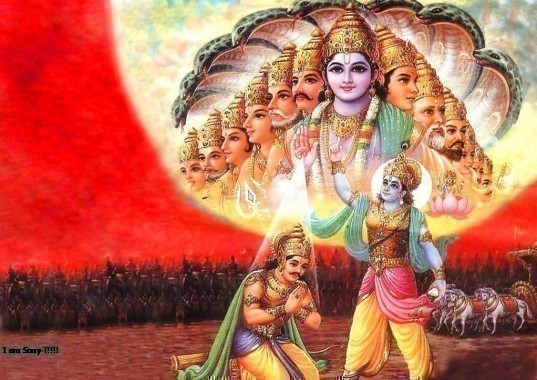
Arjuna was born when Indra, the god of rain, blessed Kunti and Pandu with a son. From childhood, Arjuna was a brilliant student and was favoured by his beloved teacher, Drona. Arjuna is depicted as a skilled archer, winning the hands of Draupadi, who married the five brothers because of Kunti's misunderstanding. Arjuna is twice exiled, first for breaking a pact with his brothers; and secondly together with them when his oldest brother was tricked into gambling away the throne.
Some notable incidents during the first exile were Arjuna's marriages with princesses Ulupi, Chitrāngadā and Subhadra. From his four wives, Arjuna had four sons, one from each wife — Shrutakarma, Iravan, Babhruvahana and Abhimanyu. During his second exile, Arjuna gained many celestial weapons. Being a powerful warrior, Arjuna was also skilled in music and dance. At the end of the epic, Pandavas, accompanied by Draupadi, retired to the Himalayas. Arjuna was the fourth one to fall on the way.
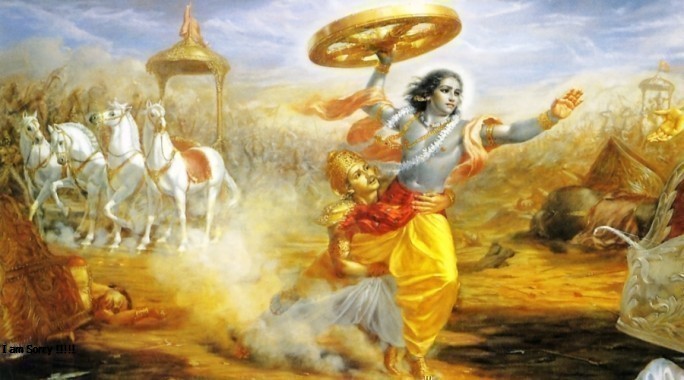
Arjuna was one of the five Pandava brothers of royal lineage, whose collective name derives from their father and heir to the Lunar dynasty, Pandu. However, Pandu was under a curse whereby he would die if he had sexual relations with a woman and thus his sons were born using a mantra given to Kunti by sage Durvasa during her maiden days. His wives—Madri and Kunti— invoked different gods and were blessed with children. According to the legend, Arjuna was a demigod, who was born as a blessing after his mother Kunti invoked the god Indra on her husband's request. Whilst the Devi Bhagavata epic records Arjuna as a reincarnation of a rishi called Nara, the Mahabharata makes no mention of this.
Despite being the younger brother of Dhritarashtra, it was Pandu who succeeded their father as king of Bharata. This was because Dhritarashtra was blind, a disability that caused him to forfeit his right to the royal succession. Dhritarashtra fathered 100 sons, known as the Kaurava brothers, and ascended the throne on the death of Pandu. The Pandava brothers were then brought up with their cousins, the Kauravas, and the education of all these boys was supervised by Bhishma. Among their teachers was the brahmin warrior called Drona, who considered Arjuna to be his favourite. According to Swami Parmeshwaranand, Arjuna was Drona's most accomplished pupil. He notes an incident where Drona deemed that out of all his students, none but Arjuna had the steadfast focus to shoot the eye of a toy bird on a tree using a bow and arrow, and that Drona was proven right.
However, George M. Williams considers another pupil, Karna, to have been as capable as Arjuna. Karna had been born to Kunti prior to her marriage with Pandu, blessed with Surya but then abandoned to be raised by a low-caste family. He was thus secretly a half-brother of Arjuna and contrasted with him by being of low status. As the legend progresses, these classmates become enemies, with Karna and the Kauravas allying against Arjuna and his four brothers. After the princes completed their training, Arjuna defeated Drupada of Panchala, who was impressed by the prince's skills, as the gurudakshina for his beloved teacher Drona. Later, Duryodhana and his maternal uncle Shakuni planned to burn Pandavas alive along with their mother Kunti. They built a palace out of lac in a village named Varanāvata. The Pandavas, though, managed to escape the house of lac with the help of Vidura through a secret tunnel.
Arjuna is a central character in the Hindu epics and appears in hundreds of situations. Among the most notable is his marriage to Draupadi, the fire born daughter of Drupada, who was the king of Panchala.After the event of Lakshagriha, Arjuna, his mother and brothers decide to hide from Hastinapura. One day, Arjuna comes to know that Drupada is holding an archery tournament to determine who should marry his daughter. The tournament was to lift and string a bow, and fire arrows to pierce the eye of a golden fish only by looking at its reflection in the water. At the Swayamvara, almost all the assorted monarchs were unable to complete the challenge. In the end, Arjuna, dressed as a Brahmin, wins the tournament. Annoyed by their defeat, the kings attack Arjuna, but he defeats them and runs home to tell his mother of his success, shouting "look what we have found". Commentators vary as to whether Kunti thought he was referring to alms found in the forest or to some great prize unknown to her. She tells him that the find must be shared with his brothers, as they had always shared such things in the past.
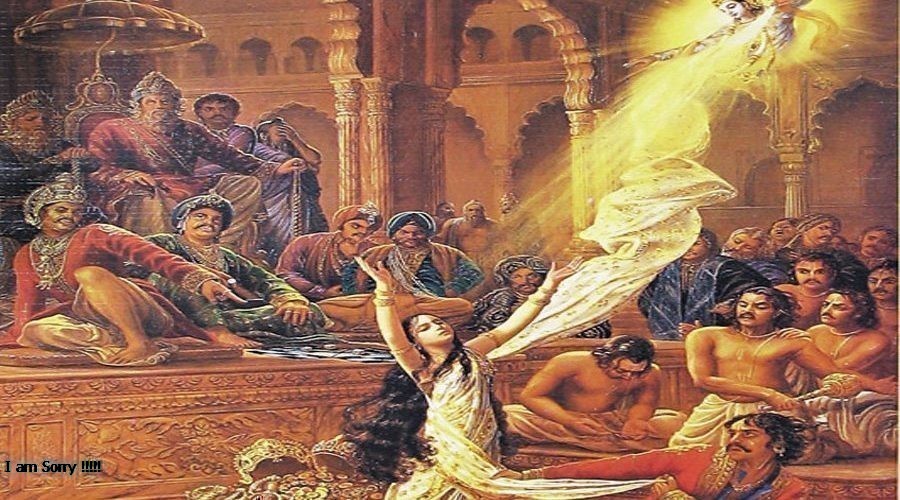
This misunderstanding, combined with the protocol that the oldest of the brothers, Yudhishthira, should marry first, leads to the agreement that all five brothers marry her. This is one of the rare examples of polyandry in Sanskrit literature. The brothers agreed that none should intrude if Draupadi was alone with one of the others, the penalty for doing so is a year to be spent in exile during which the culprit must remain celibate. When Arjuna, his siblings, mother and Draupadi returned to Hastinapura, Dhritarashtra determined to avoid a rivalry developing for control of Hastinapur by splitting the kingdom, with half of it being left to his own eldest son, Duryodhana, and half to the eldest son of Pandu, Yudhishthira.
Arjuna inadvertently broke the pact with his brothers, intruding as he sought to collect weapons whilst Yudhishthira, was alone with Draupadi. He felt obliged to go into exile despite Yudhishthira's attempts to dissuade him. It was this event that led to him forming a close relationship with his cousin Krishna because he ignored the celibacy condition of the pact and married three people on his travels, the first of whom was a Naga princess named Ulupi, with whom he had a son called Iravan. His second marriage was with a princess of Manipura, Chitrangada, who bore a son named Babhruvahana. The third was with Subhadra, the sister of Krishna. This last event, which took place in Dvaraka, is not the first meeting between Krishna and the Pandavas in the story but it does mark the start of a bond, sealed with the birth of the couple's child, Abhimanyu, whom Krishna adores.
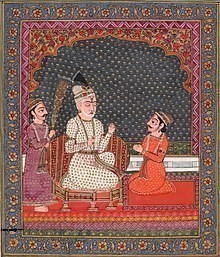
Sanjay
While Sanjaya was still in Hastinapur, the series of events that happened on the battlefield of Kurukshetra was very clear to him (“Sanjaya’s Gift”). He saw with his eyes as if he was on the battlefield. Sanjaya saw: partisans of Dhritarashtra and the Pandavas gathered there, heard with his ears the words of Duryodhana, the fierce battle-cry of grandfather Bhishma, the mighty sound of Panchajanya proclaiming the destruction of the Kurus, and the dialogue between Krishna and Arjuna bringing out the import of the Gita. Sanjaya clearly has an advantage over an average person because he could hear things that would even frighten the average person. He was described to be gifted as he could see “events at a distance granted by the Rishi Vyasa” (“Sanjaya, Charioteer”). On the eve of the Mahabharata War, the Gita was spoken, “we find in the very first verse of the Gita, King Dhritarashtra seeking information about the War from Sanjaya who had received the gift of divine vision.
As Dhritarashtra's advisor, Sanjaya's job was not as hard. Until he had to tell Dhritarashtra the news of the death of his “hundred sons at the hands of Bhima at different points of time in the battle and offers the sorrowing king solace in his darkest hours. Sanjaya tells every incident of the Kurukshetra war. Sanjaya also gives various descriptions of: Earth, the other planets, and focuses on the Indian subcontinent and gives an elaborate list of hundreds of kingdoms, tribes, provinces, cities, towns, villages, rivers, mountains, and forests of the Indian Subcontinent (Bharata Varsha). He also explains about the military formations adopted by each side on each day, the death of each hero and the details of each war-racing. Sanjaya is known to be very frank in his narration of the battle events and his opinions and he also predicted the destruction of Kauravas at the hands of Krishna and Arjuna (“Sanjaya, Charioteer”). Sanjaya was Dhritarashtra's honest advisor.
Sanjaya is a virtuous character who “represents intuitive knowledge, which arises from long and arduous spiritual practice, a predominance of sattva and inner awakening” (V, “Symbolism in the Bhagavadgita”). Despite him not being as lucky as Arjuna to earn the divine grace, he is still able to receive knowledge from Lord Krishna because he mastered having control over his body and mind (V, “Symbolism in the Bhagavadgita”). He represents having a sense of awareness as he is able to witness all of the details occurring in the battle. Sanjaya was able to spot when "Arjuna dropped his bow and arrows, and sat down on the seat of the chariot, with his mind overwhelmed with sorrow". Seeing Arjuna past his physical appearance as being exhausted from the battle, Sanjaya displays his mastery in the mind and body as he was able to see Arjuna as sorrowful.
Dritrastra
With Vichitravirya having died of sickness, Bhishma unable to take the throne because of his vow, and Bahlika's line unwilling to leave the Bahlika Kingdom, there was a succession crisis in Hastinapur. Satyavati invites her son Vyasa to impregnate the queens Ambika and Ambalika under the Niyoga practice. When Vyasa went to impregnate Ambika, his scary appearance frightened her, so she closed her eyes during their union; hence, her son was born blind. Dhritarashtra, along with his younger half-brother Pandu is trained in the military arts by Bhishma and Kripacharya. Hindered by his handicap, Dhritarashtra is unable to wield weapons, but has the strength of one hundred thousand elephants due to boon given by Vyasa, and is said to be so strong that he can crush iron with his bare hands.

When it came time to nominate an heir, Vidura suggested that Pandu would be a better fit because he was not blind. Though bitter at the result, Dhritarashtra willingly conceded the crown, though this act would flower into the protectiveness he would have over his crown later in life. Dhritarashtra marries Gandhari of Hastinapur's weakened and lowly vassal Gandhar; Gandhari covers her eyes with cloth in order to better understand her husband's blindness. He and Gandhari had one hundred sons, called the Kauravas and one daughter Dushala. He also had a son named Yuyutsu with a concubine.
After the incident with Rishi Kindama, Pandu retired to the forest. Hence, Dhritarashtra became the de facto king. Through the blessings of Vyasa, he and Gandhari have one hundred sons and a daughter, with his oldest son, Duryodhana, becoming his heir. Upon Duryodhana's birth, ill omens appeared; many sages and consultants advised Dhritarashtra and Gandhari to abandon the baby. But they refused to do so; Duryodhana grows up with a princely education and his parents thought that he will be a great heir. However, when Pandu dies, Kunti and her sons come to Hastinapur, living alongside Dhritarashtra's children. Yudhishthira, Pandu's eldest son, is older than Duryodhana. Given that Pandu was the king and that Yudhishthira is born of the god Dharma, he has a strong claim to the throne. A succession crisis begins; though recognizing Yudhishthira's merits, Dhritarashtra favours his own son, blind to his faults. Upon much pressure from the Brahmin council, Vidura, and Bhishma, Dhritarashtra reluctantly names Yudhishthira as his heir.
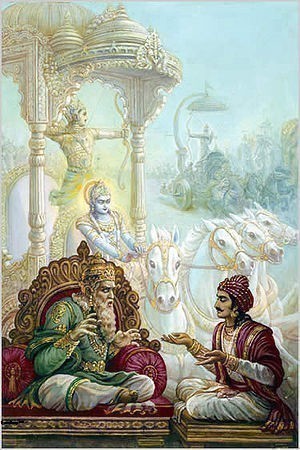
After the lakshagraha incident, in which the Pandavas are apparently killed, Dhritarashtra mourns but is able to finally name Duryodhana as his heir. When the Pandavas are revealed to have survived, Duryodhana refuses to cede his title as heir when the obviously sour relations between the Kauravas and the Pandavas come to focus. On Bheeshma's advise, Dhritarashtra splits the country in two, giving Hastinapur to Duryodhana and Khandavprastha to Yudhishthira. Shakuni, Gandhari's brother, was a master of dice as he could control them. He along with his nephew Duryodhana conspired in a game of dice and invited the Pandavas to gamble. The Pandavas eventually lost their kingdom, wealth, and prestige and were exiled for thirteen years. Draupadi, the wife of the Pandavas, was humiliated in court after Dushasana tried to disrobe her. The helpless blind king only intervened after counselling with Gandhari when Draupadi was going to curse the Kuru dynasty. Though individuals like Vikarna and Vidura objected to the wrongdoing of Duryodhana, most of the spectators were helpless due to their obligations to Hastinapur; Dhritarashtra could have spoken out but did not.